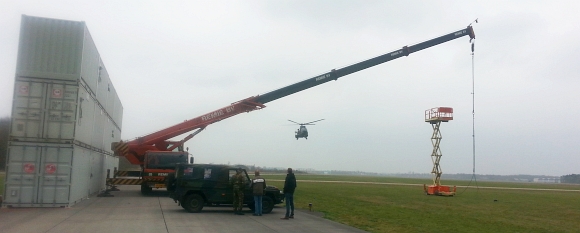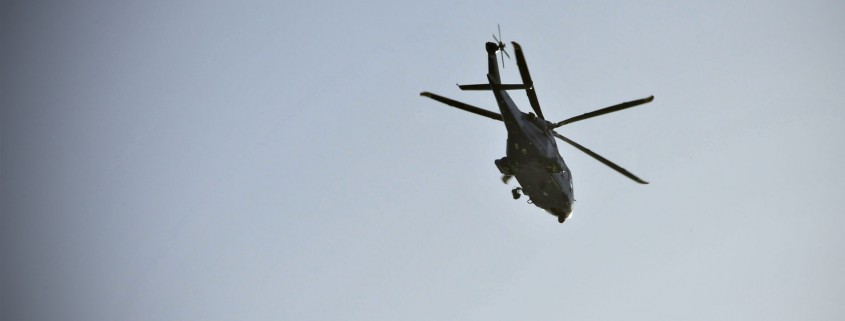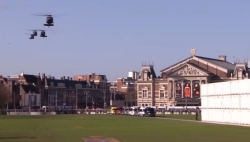Thanks to contributions made by the National Aerospace Laboratory (NLR), US President Barack Obama was able to visit Amsterdam’s Rijksmuseum on the morning of 24 March 2014. Commissioned by Amsterdam municipality, NLR’s highest profile contribution was the idea of creating a protective wall of sea containers in front of the Van Gogh Museum that substantially reduced noise levels.
The UH-60 Blackhawk and VH-60 Whitehawk helicopters that landed on the Museumplein as part of President Obama’s official visit to the Netherlands generated high noise levels and associated vibrations in the surrounding area. This posed a problem for the museums situated on the Museumplein: the vibrations caused by relatively high noise levels could potentially damage paintings and artworks.
Amsterdam municipality therefore asked NLR to study the probable noise levels and offer advice about possible noise reduction measures should the expected noise levels prove critical for the museum’s artworks.
Although there was scant data available about the UH-60, NLR was able to estimate the probable noise levels by using previous noise level measurements conducted for the CLSK helicopters in Cabauw and De Peel. The research revealed that the critical value would indeed be substantially exceeded unless certain measures were taken.

Performing measurements with the Cougar at Gilze-Rijen
NLR therefore devised solutions which would subsequently allow President Obama’s visit to Museumplein to go forward as planned, with the probability of damage occurring being reduced as much as possible given the time and means available. NLR’s advice covered two specific areas.
NLR advised that certain measure should be adopted pertaining to the chosen flight procedures, which involved the altitude, route, types of approach and take-off, and especially the distance between the helicopters.In addition, it was thought advisable to enact even more measures. NLR devised a protective screen positioned close to the helicopters that would further help reduce noise levels. The idea was to create a long, three-storey high wall of sea containers. However, based on the available literature and experience, it was uncertain whether this would work for critically low frequencies of less than 50 Hz. Consequently, on 18 March, measurements were conducted at the Gilze-Rijen Air Base using the Air Force’s AS532 Cougar, which is comparable to the UH-60 in terms of size and weight. A small section of container wall (30 meters wide, three-storeys and approximately 8 meters high) was constructed at the air base. The noise levels generated by the Cougar were measured from both behind this wall and in the open field. The helicopter was measured during hovering and various types of approaches and take-offs.

The wall of containers at Museumplein
These measurements provided pertinent information about the optimum procedures and effects of the container wall. It appeared that the containers reduced the noise levels in low frequencies up to 10 dB. This would prove to be an appropriate option and of great importance in protecting the Van Gogh Museum from high noise levels and vibrations.
Amsterdam municipality ultimately opted to construct a container wall measuring 120 meters long and three-storeys high, as pictured in the photo below. Coupled with various measures taken within the museum, as advised by Level Acoustics, it was possible to allow President Obama’s visit to take place, secure in the knowledge that the probability of the paintings being damaged had been greatly reduced.
Air safety, security and noise all played important roles in this event. In the context of the above-stated conditions, the KLPD carefully took NLR’s advice into account when weighing the various options. Where possible, given the existing constraints, NLR’s advice about noise levels was followed.




